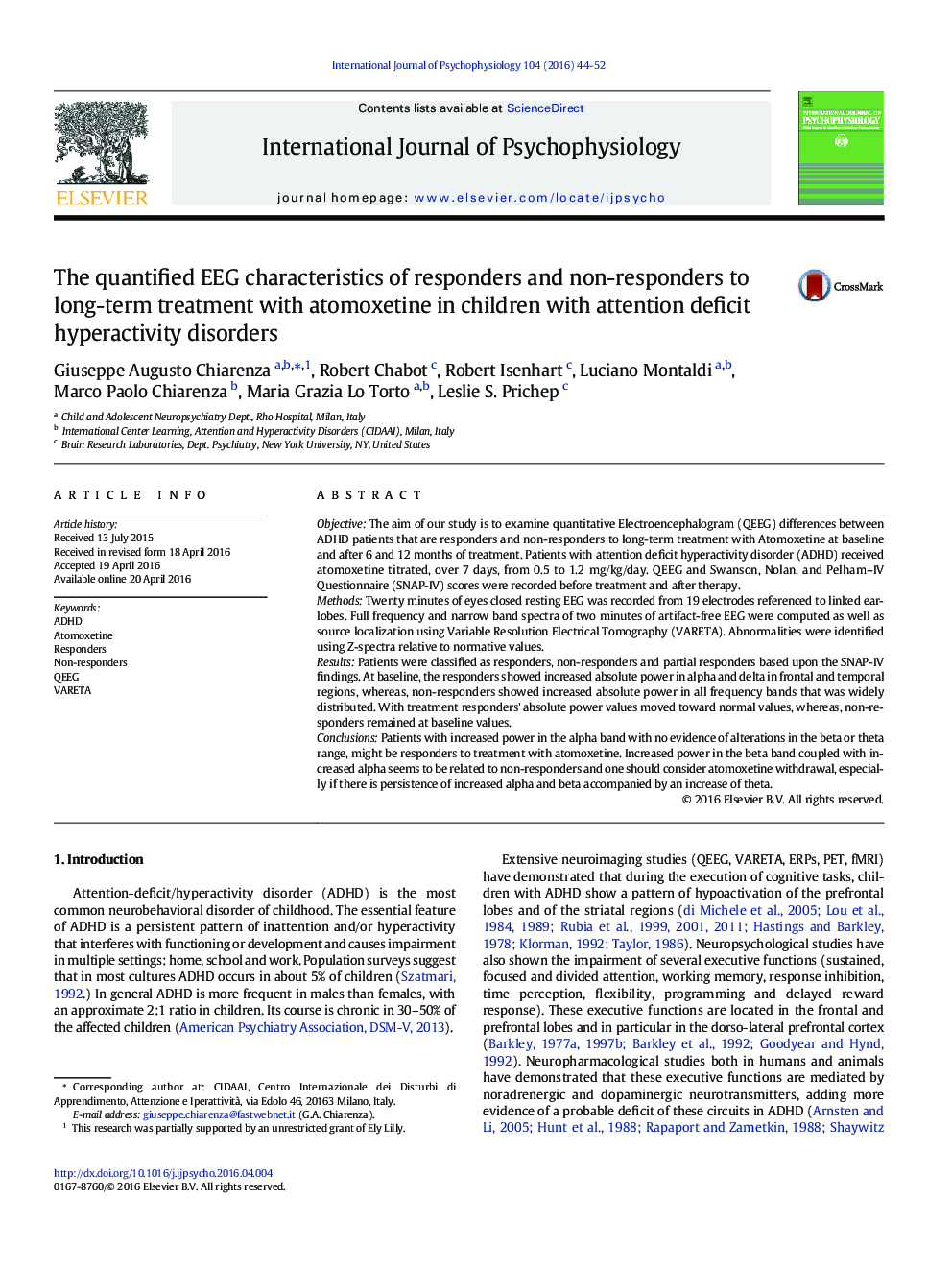| Article ID | Journal | Published Year | Pages | File Type |
|---|---|---|---|---|
| 929587 | International Journal of Psychophysiology | 2016 | 9 Pages |
•This paper addresses the long term changes of QEEG in children with ADHD.•Children were treated for one year with atomoxetine.•Patients with a peak at 11.7 Hz might be a responder to therapy with atomoxetine.•Atomoxetine should be discontinued if there is an increase of theta with treatment.•The QEEG could be used for choosing and monitoring pharmacological treatments.
ObjectiveThe aim of our study is to examine quantitative Electroencephalogram (QEEG) differences between ADHD patients that are responders and non-responders to long-term treatment with Atomoxetine at baseline and after 6 and 12 months of treatment. Patients with attention deficit hyperactivity disorder (ADHD) received atomoxetine titrated, over 7 days, from 0.5 to 1.2 mg/kg/day. QEEG and Swanson, Nolan, and Pelham–IV Questionnaire (SNAP-IV) scores were recorded before treatment and after therapy.MethodsTwenty minutes of eyes closed resting EEG was recorded from 19 electrodes referenced to linked earlobes. Full frequency and narrow band spectra of two minutes of artifact-free EEG were computed as well as source localization using Variable Resolution Electrical Tomography (VARETA). Abnormalities were identified using Z-spectra relative to normative values.ResultsPatients were classified as responders, non-responders and partial responders based upon the SNAP-IV findings. At baseline, the responders showed increased absolute power in alpha and delta in frontal and temporal regions, whereas, non-responders showed increased absolute power in all frequency bands that was widely distributed. With treatment responders' absolute power values moved toward normal values, whereas, non-responders remained at baseline values.ConclusionsPatients with increased power in the alpha band with no evidence of alterations in the beta or theta range, might be responders to treatment with atomoxetine. Increased power in the beta band coupled with increased alpha seems to be related to non-responders and one should consider atomoxetine withdrawal, especially if there is persistence of increased alpha and beta accompanied by an increase of theta.
